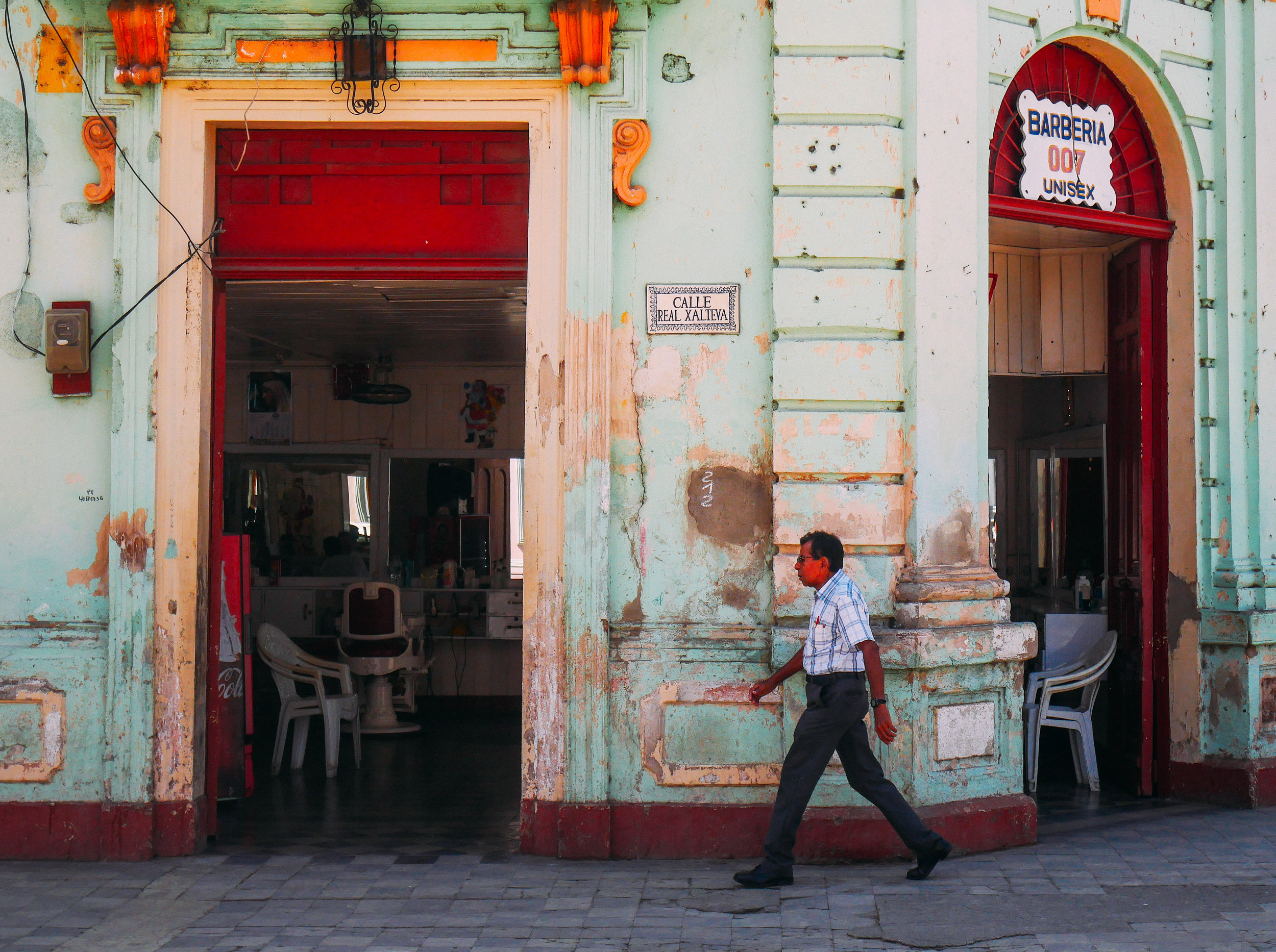What do you need to know before pointing your tires towards Central America? Last summer, we scoured the internet for basic pertinent information on riding south of the border. We honestly didn’t know a lot about the area beyond the infamous corruption, crime, and poverty. While there are plenty of guides for backpacking travelers, there were a number of questions pertaining specifically to motorcycling for which we struggled to find answers.
Are the cops aggressive? How much is a reasonable bribe? How bad are the roads? How many passport copies do we need to cross the borders?
If I could offer a little advice to myself, I would say, everything will be ok, you will figure it out. Bear in mind that at most of these borders, a streamlined procedure and a few well-placed signs would eliminate the livelihoods of many people, from ayudantes or “unofficial assistants” to snack vendors to shoe shiners to money changers. Sure, appearing overwhelmed and frustrated seems to invite exploitation, and ayudantes can initially seem insistent and pushy. However, patience, graciousness, and speaking as much Spanish as you can go a long way. Politely, but firmly, asking official customs and immigration agents for clear instructions, and declining any other unsolicited “assistance,” is all you need to do move through the procedures with ease.
Over the whole journey, we did not have a single run-in with law enforcement and no one requested a bribe. Below is a list of everything else I would have liked to know beforehand. This was only our experience and we can’t promise whether it is typical or not. Additionally, conditions can change rapidly in Central America so, if you are planning your own trip, take this with a grain of salt.
Mexico
Border ••••
1 hour. We crossed east of Tijuana at the country town of Tecate. It was casual and quick, but expensive. The only real danger is accidentally crossing without receiving your temporary vehicle import permit (TIP). Without a TIP a vehicle cannot be allowed aboard the Baja Ferry to enter the mainland of Mexico.
Roads ••
There are two options: the cuota (toll) roads or the libre (free) roads. At the beginning of our journey we were committed to the free roads. We wanted to see the landscape and the pueblos and we wanted to avoid the fees and the trucks. But awe eventually grew weary of the irregular conditions, the frequent construction, and the pueblo after indistinguishable pueblo with their accompanying armies of speed bumps. The toll roads are smooth, well-maintained, multilane freeways. However they are also costly and boring.
Topes •
They are everywhere, especially where you least expect them. If there is a steep curve, a tope will be waiting patiently for you in the shade of a tree. Some are tall, some are wide, some are fake. They grate on your nerves and on your oil pan, and can ruin an otherwise pleasant ride. They seem to be the only thing that will slow down drivers in Mexico, and they also keep the in-numerous suspension repairmen in business. I estimate that there is a tope for every kilometer of road.
Drivers •••
Mexican drivers take a lot of heat from American tourists, but in truth, I found them to be quite friendly. Trucks frequently motioned when I could pass. Even on narrow roads, vehicles would make room for other vehicles, even pulling onto the shoulder to do so.
Cops •••
Mexican cops have a uniquely negative reputation in Latin America. They are intimidating in their all black Batman outfits. We can’t comment as to whether it is myth making or not, but despite frequent warnings, we encountered no trouble.
Food ••
We experienced two realities: the exceptional, and the day-to-day. Among the exceptional are the fish tacos in La Paz, boutique restaurants in Guadalajara, street tacos in Mexico City, arabe al pastor tacos in Puebla, and aguachile ceviche on the coast. But in between these gastronomical delights, we often struggled to find a decent cut of meat or a well-rounded meal. The repetition of celebrated but modest variations on the theme of corn, beans, and meat grew wearisome. My mood was not improved by a constant intestinal battle, nor by my awareness of the consistently poor sanitary standards employed throughout the country.
Cost ••••
Mexico is cheap. A taco can cost as little as $1.50, and lodging is frequently around $10 a night for a dorm bed, and frequently cheaper and more adequate options can be found on Airbnb.
Overall •••
Mexico is a huge country with diverse attractions. However because of its immensity and the condition of the roads, it can be challenging to ride through.
Guatemala
Border •••
2 hours. We crossed into Guatemala from the state of Chiapas. The entry point was chaotic with traffic, pedestrians, stalls, sellers, and helpers. It was by far the most hectic border we crossed. The agents, however, were extremely friendly and everything we needed was easily accessible.
Roads •
The last couple miles of road in Mexico were the worst we had seen until we crossed into Guatemala. There the roads immediately deteriorated into complete disrepair. Roads in Guatemala seem to lack any attempt at maintenance, so if the road is not brand new, it is riddled with potholes.
Topes ••
The speedbumps were still an irritation, but compared to Mexico, they seemed few and far between.
Drivers •
Guatemalan drivers are the worst we have encountered. They cut off motorcyclists, pass on blind curves, and generally act with complete disregard for the safety of themselves or other motorists.
Cops •••
The police presence in Guatemala felt much lighter than in Mexico. In Guatemala City a pair of cops pulled along side me to wish me a good trip.
Food •••
Portions are larger than in Mexico. Delicious fried chicken is sold everywhere. There is an interesting German influence on the cuisine, and even at a local food market, tortillas and beans are served with a side of potato salad. The plantains are the sweetest here.
Cost •••
While very affordable, Guatemala was slightly more expensive than Mexico, and generally accommodations were not quite as nice.
Overall •••
Guatemala is an incredibly beautiful country with a rich culture and many indigenous communities. Riding can be challenging but is immensely rewarding.
El Salvador
Border ••••
1.5 hours. The crossing was tranquil. The border agent stood beneath a tent in a parking lot. It was very easy, and the agents were friendly. One had lived in San Francisco, and was excited to share some of his memories with us.
Roads •••
Unlike Guatemala, the roads in El Salvador all seemed old, but modestly maintained. They were neither especially smooth, nor especially decrepit. Generally, they were quite fun to ride on.
Topes ••
There is a marked decline in the reliance on topes in El Salvador.
Drivers •••
Salvadoran drivers struck me as distinctly well-behaved.
Cops •••
No interaction.
Food ••••
The papusa is the national dish of El Salvador. They are cheap and delicious.
Cost ••••
El Salvador was easily the cheapest country in Central America.
Overall ••••
Its criminal history still keeps many travelers away, but El Salvador was a bright spot on our journey.
Honduras
Border •••
2 hours. Entering the country was a little hectic, and the agents seemed uncertain of how many copies of our passport they needed to admit us. This was the only border where we were tricked into using the services of a helper. We paid him a small tip and crossed.
Overall N/A
Honduras was recently on the brink of a civil war, so we drew our route through Central America to spend the least amount of time in this country. We passed through it into Nicaragua in a single day. On that short trip we saw a lot of poverty, but the road was fairly new, and we didn’t experience any trouble.
Nicaragua
Border •
4 hours. Nicaragua has perhaps the most irregular border crossing in Central America. The requirements can change day to day. We were required to email a document of intent three days before arriving. Then, because we were on a motorcycle, we were assigned a special agent. We had to give an entrance interview and have all of our bags scanned. Other people, we’ve heard, were allowed to skip all of that.
Roads •••
Roads were well-maintained throughout the country, with the exception of the island of Ometepe. The main highways are well paved, but most of the secondary roads are packed dirt. Unlike the neglected dirt roads in Mexico or Guatemala, however, these were smooth and easy.
Topes ••••
At this point topes were no longer a concern.
Drivers •••
There were more horse and mule-drawn carts here than anywhere else.
Cops •••
No issues.
Food ••
The national food is Gallo pinto, a mixture of rice and beans. The plantains are fried and crunchy. It is a simple, but tasty cuisine.
Cost ••••
Very cheap, but slightly more than El Salvador.
Overall ••••
Nicaragua is a great place to experience tropical wildlife, hike volcanoes, and surf pristine beaches at economical prices. Right now there is severe civil unrest and like everywhere else in Central America, conditions can change overnight.
Costa Rica
Border •••
2 hr. At this point we were old hats at border crossings. While Diana took care of paperwork, I got my boots shined. This was the first country since Mexico with mandatory vehicle insurance.
Roads ••••
Roads in Costa Rica could be mistaken for US highways. They are smooth, wide, and well marked.
Topes ••••
Not a concern.
Drivers •••
I felt like most of the drivers were American tourists.
Cops ••••
No issue.
Food •••
Much is made of the cost in Costa Rica, but it is easy to find a simple good size meal at a soda for $5 or $6.
Cost •
By camping and eating at sodas we were able to keep our daily costs down, but the national parks and attractions, for which Costa Rica is famous, were the most we paid for anything on the trip. Entering a park can cost between $20 - $80 and it hampered our enjoyment of the country.
Overall ••
I think Costa Rica would be a great place to vacation with or without a family, but for our travel style and budget it was just too crowded with Americans and too expensive.
Panama
Border ••
2 hr. We crossed into Panama in a small mountain village. There was almost no one there, as it was lunchtime, and the agents were preparing to close up early for Holy Thursday, which is a holiday for most Panamanians. While we were purchasing our mandatory insurance the power went out. After thirty minutes it came back on and we were able to enter Panama.
Roads ••••
Like Costa Rica, Panamanian roads are excellent. They are smooth, well-marked, and well-maintained throughout the country.
Topes ••••
Not a concern.
Drivers •••
By Central American standards, drivers in Panama were not bad.
Cops •••
No issue.
Food •••
We primarily cooked our own food in Panama until we reached Panama City. There we were delighted to find a good selection of international cuisine.
Cost •••
Panama is expensive by Central American standards, but a little cheaper than Costa Rica.
Overall ••••
Panama is an overlooked destination in Central America. Besides the canal, it has beautiful mountains, tranquil beaches, and no shortage of Caribbean flair. Panama City is a surprisingly charming and cosmopolitan city.
If you found this information useful, or not, please leave a comment.

